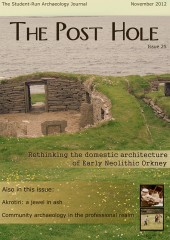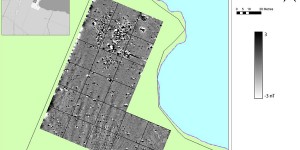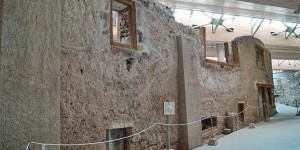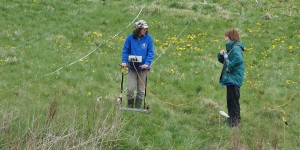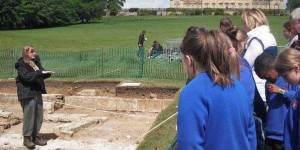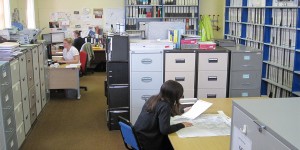We have an exciting issue in store for you this month! Issue 25 has two broad themes. One of these is the intimate view of domestic history, glimpsed through the excavation and reinterpretation of sites in the Orkney Isles, at Akrotiri and at Gawthorpe Manor.
The Orkney Isles, largely untouched north of the mainland of Scotland, are perhaps most famous for the amazing preservation of Neolithic architecture. Giles Carey, a Masters student at Orkney College UHI, provides us with a reinterpretation of these remains in a domestic context and draws parallels with sites elsewhere.
Just as vividly preserved is Akrotiri, a Bronze Age settlement on the Mediterranean island of Santorini, which was apparently abandoned following the documented volcanic eruption of the island in the middle of the 2nd millennium BC. Rianca Vogels, an undergraduate student at York, evaluates the contemporary contexts behind the numerous interpretations of the demise of this materially rich community, and reminds us that its life history should not be overshadowed by studies of its end.
Both of these articles remind us that however ‘established’ people can make themselves and their lives, there is no guarantee that influences beyond their control will not interfere with their apparent intentions. However, as I will explain in my own article (in the next issue), radical change in lifestyle can also be made intentionally, such as the demolition of the medieval Gawthorpe Hall (near Leeds), so that its wealthy owners, the Lascelles family, could transform their lives and expressions of social status through the newly constructed Harewood House nearby.
It has recently been announced by Channel 4 that the much-loved archaeology TV show, Time Team, will suffer the same kind of fate as Gawthorpe Hall. The value of Time Team in disseminating concepts and investigative methods of Archaeology, not only introduced new audiences to the field, but also encouraged people to give greater consideration to their heritage. I only hope that similar initiatives will build on the legacy of Time Team in the future.
Also present in this issue are three articles that focus on the engagement of the public with Archaeology. Hilary Wolkan, a Masters student at York, tells us about her community work in the Yorkshire village of Crambe and how the use of geophysics brought locals together. Emily Rayner, a PhD student at York, tells us about her work in engaging visitors to Harewood House with the less visible medieval history of the estate. Finally, Katharine Newman explains her role in the Humber Sites and Monuments Record, and how this allows members of the public to find out about their local history (this will be available via our website).
Enjoy!
David Altoft (Editor-in-Chief of The Post Hole - david.altoft [at] theposthole.org)


